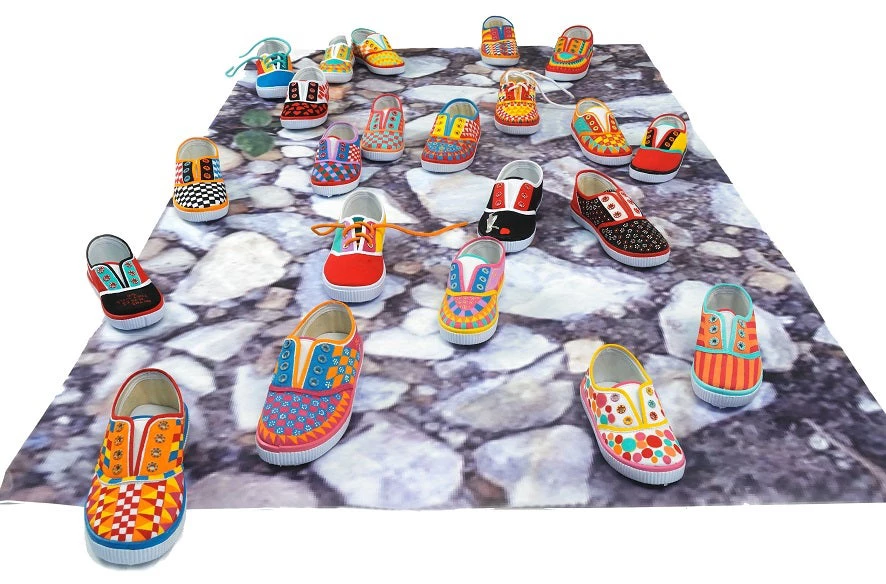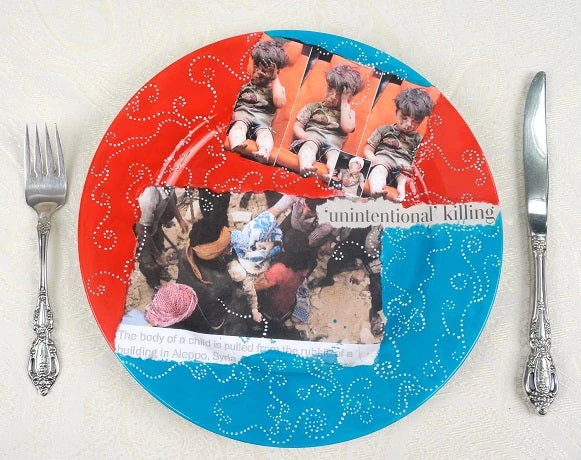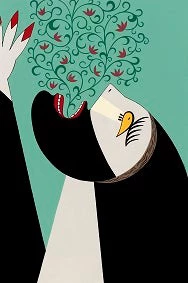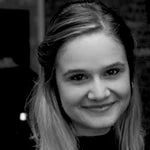
Each one is different - one has pink rims, and multi-sized dots, and hues of electric orange, deep fuchsia, and sea foam green. Another is donning pinstripes in red and orange, with mint green rims. And another – violet, blue, and red checkers with accents of lavender. We are looking at shoes, twenty-two shoes to be exact. They are all hand-painted by artist Helen Zughaib. These shoes, titled Oh The Places They Will Go, is part of the artists’ exhibition The Arab Spring – Unfinished Journeys, which premiered at the World Bank in Washington DC from January 28th to February 16th, 2018. The exhibition was hosted by the World Bank Art Program, in partnership with the Middle East and North Africa Regional Vice President Hafez Ghanem. The World Bank Art Program hosts regular exhibitions, domestically and internationally, that shed light on pressing development issues.
The Arab Spring – Unfinished Journeys stands as an important connection point between the growing global crisis of refugees and internally displaced people, and the Bank’s continuing efforts to engage in reconstruction and recovery and address the root causes of conflict and violence - from new financing mechanisms in Jordan and Lebanon, to new cash transfer programs in Yemen allowing more refugees access to food.
Helen Zughaib is a multi-dimensional, American-Lebanese artist, relying on her upbringing across Arab and American ways of life to endow her with the ability to observe these cultures as both an insider, and an outsider. This exhibition constitute a series the artist has been developing since 2010, in response to the Arab Spring. Zughaib’s series seeks to visually record this social transformation, documenting the evolution of prosperity and change, asking the viewer to confront their own understanding of immigration, Arab culture, and social and economic crisis.

In one of her works, Eat the News, Helen juxtaposes the act of eating, with the act of consuming information. A physical dinner table with plates, utensils, and even decor for ambiance, has been created. Yet, the plates themselves have been covered by headlines and shocking images about the Arab Spring. The very surface which holds food, that which sustains us, is now a vessel for something more intangible. This disruption causes question about how information plays just as much of a role as food does in our sustenance. Unbearably painful and hard to “digest” in everyday situations of eating, drinking, and other normal activities we do as the world is in upheaval and chaos, the information presented in this piece questions our relationship with media during a crisis, and how it may or may not change our daily actions.

Of her work, Helen states, “I think it is easy to land on one side or the other of many an issue, the harder path is that murky grey area in between, that has fuzzy and asymmetrical borders. That is the part I am after, though I am not saying that is easy. But the moments of mutual understanding or at least respect for one another, after creating that dialogue, is most rewarding.”


Join the Conversation